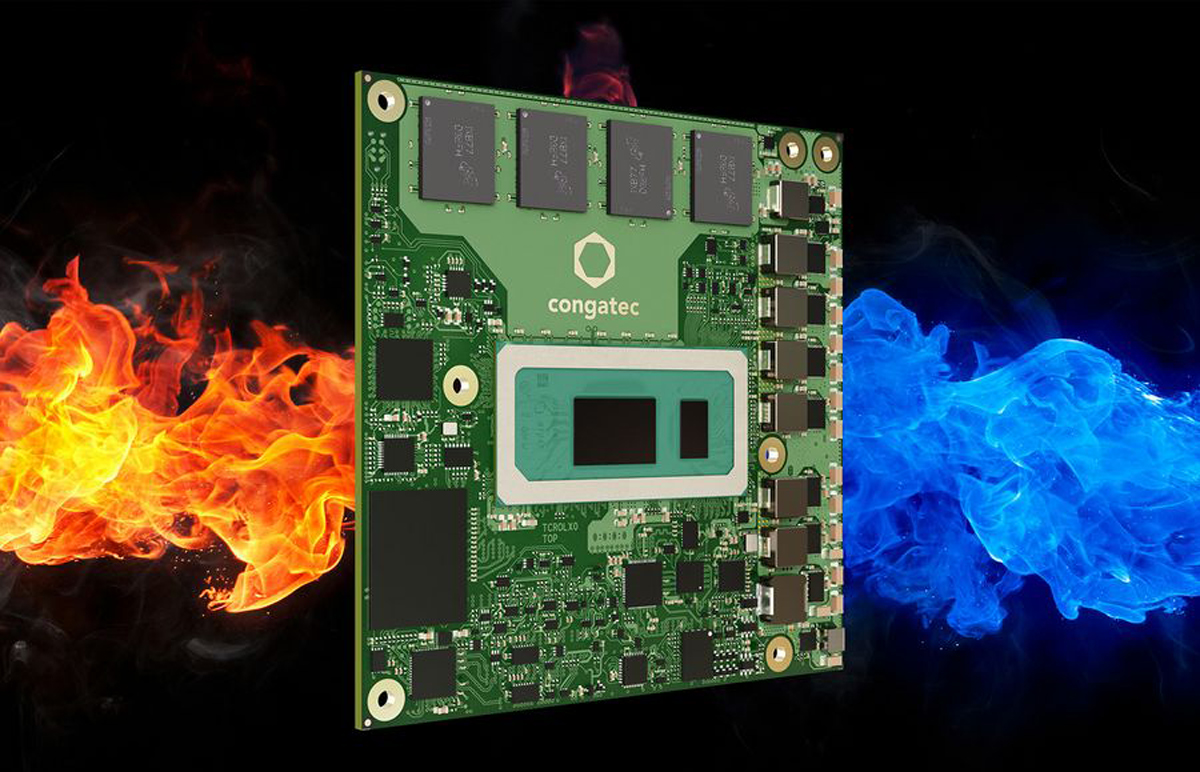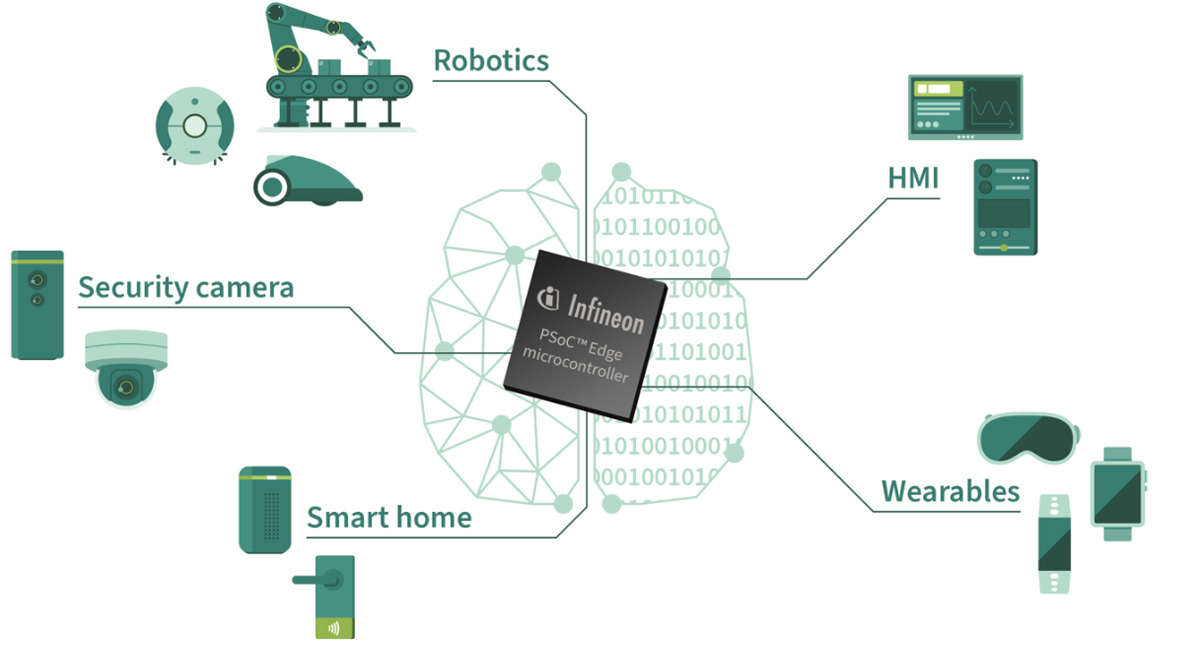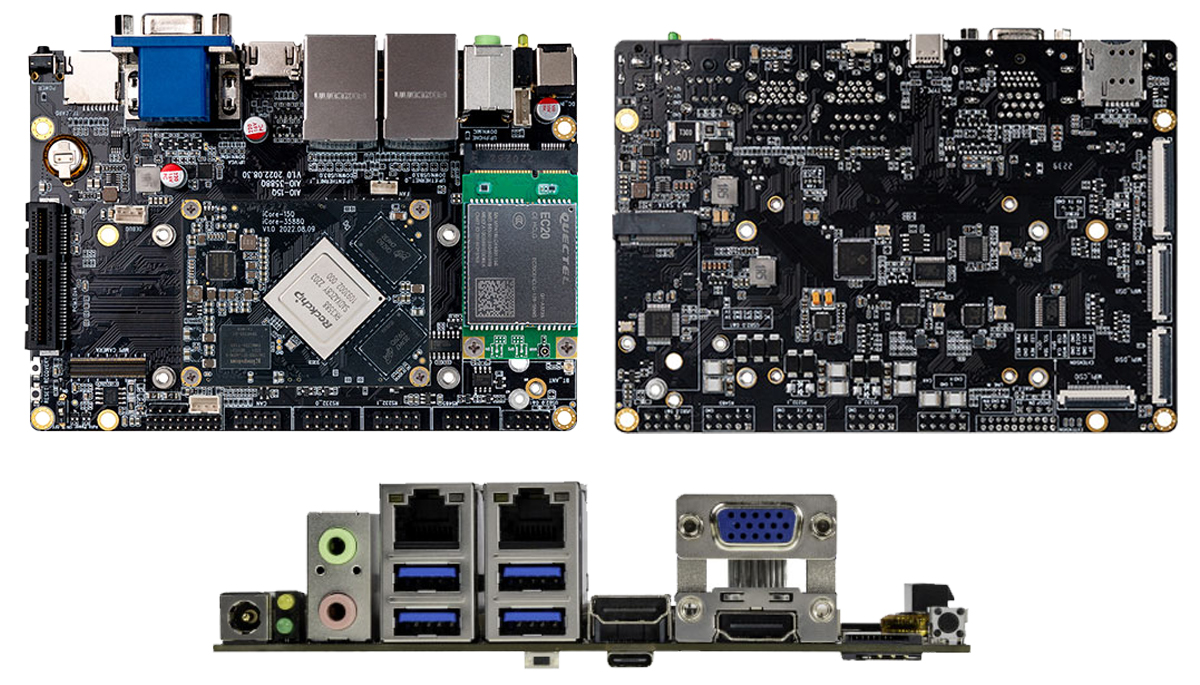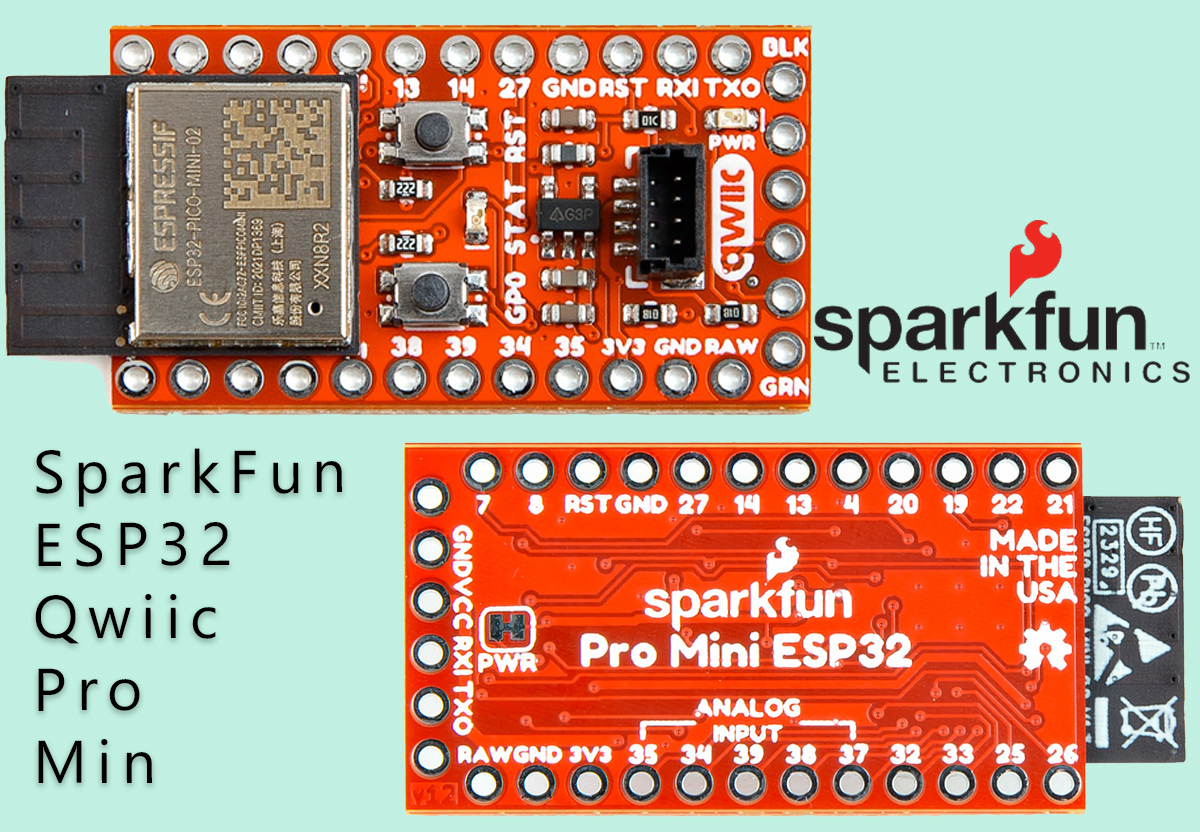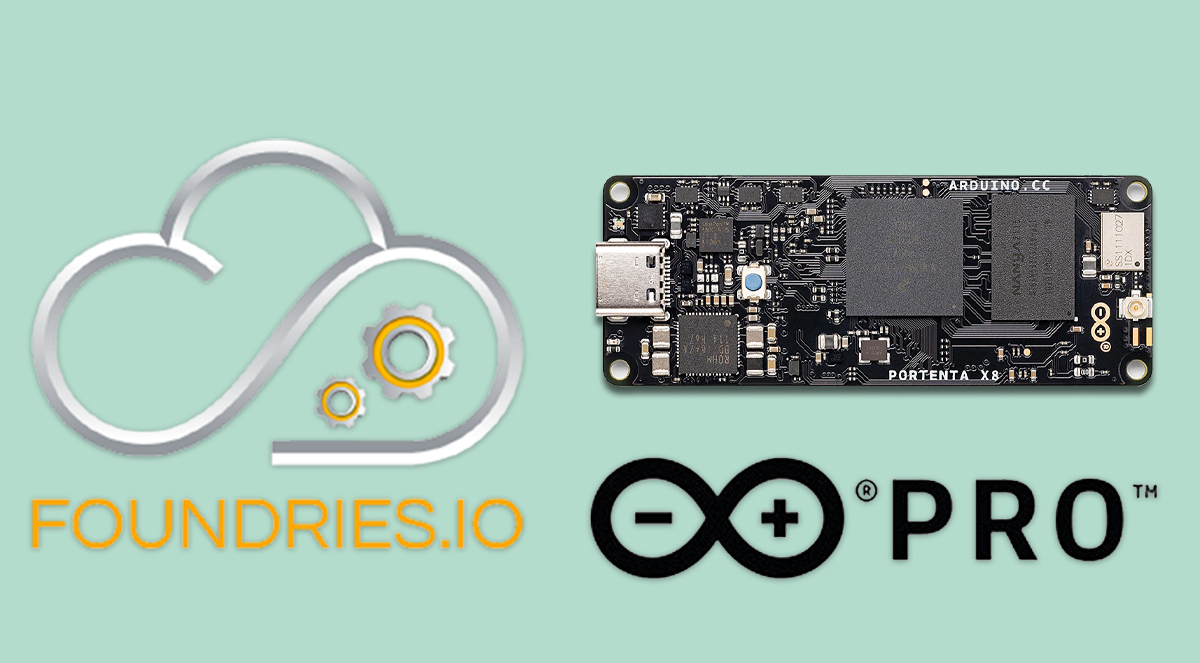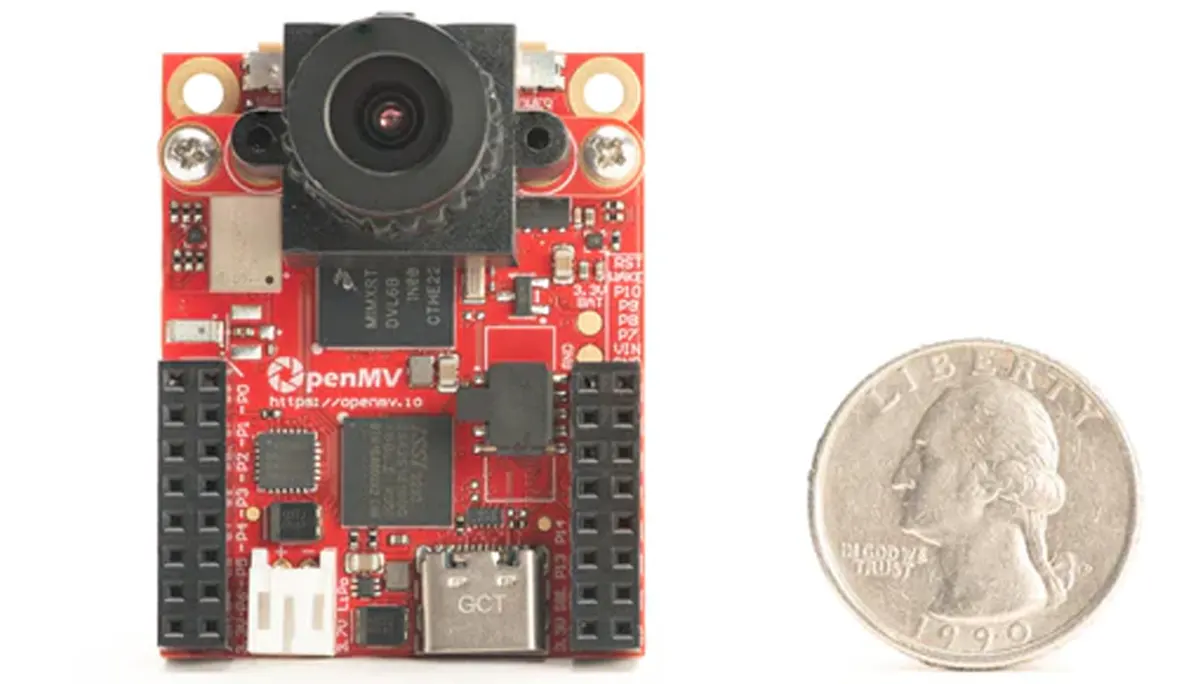We’ve noticed a surge in the popularity of COM Express modules and Congatec has recently announced six new conga-TC675r COM Express Type 6 Computer-on-Modules based on 13th Gen Intel Core (Raptor Lake) processors that happen to come with soldered RAM instead of the usual SO-DIMM memory slots found in this form factor. The modules come with up to 14(6P+8E) cores and 20-thread, ultra-fast LPDDR5x memory, all within a total TDP of 45W. According to Congatec, this device is designed to work under extreme temperatures (-40°C to +85°C), and is built to withstand the highest standards for shock and vibrations notably thanks to the user of soldered onboard RAM, making this device suitable for off-road vehicles for mining, construction, agriculture, forestry, and other demanding mobility applications. Previously we have seen manufacturers like ADLINK announce COM Express modules based on the 13th Gen architecture, and both ADLINK and Congatec have also just […]
Infineon launches PSoC Edge Cortex-M55/M33 microcontrollers for enhanced AI and ML applications
Infineon’s new PSoC Edge series of microcontrollers integrates the Arm Cortex-M55 core with Helium DSP and the Ethos U55 NPU unit for advanced AI tasks. It also includes a power-efficient Arm Cortex-M33 core paired with an NNLite(DSP/NPU) for simpler AI tasks. This setup allows the device to be more efficient in varying load conditions. Infineon’s PSoC lineup is a configurable microcontroller powered by Arm Cortex-M4, Cortex-M3, or Cortex-M0+ cores. The main USP (Unique Selling Point) of this lineup is its configurable digital and analog components. This feature makes them somewhat similar to an FPGA, but an FPGA is far more difficult to program than these microcontrollers and they are also very power-hungry. The device is equipped with advanced HMI and “Always-on” capability. “Always-on” is a feature of this device to constantly monitors and responds to signals automatically, making it suitable for smart homes, security, wearables, robotics, and many more. Key […]
Firefly AIO-3588Q 8K AI Board Features Octa-Core CPU and 6 TOPS NPU
Firefly has recently launched the AIO-3588Q 8K AI board powered by a powerful Rockchip RK3588 SoC, up to 32GB of RAM, 8K video encoding-decoding, Gigabit Ethernet, Wi-Fi 6, 5G/4G, and multiple display support. With all these features this board is designed to target the industrial, commercial, and automotive markets. Previously, we have covered many SBCs and SoMs designed by Firefly such as the similarly named Firefly AIO-3588SG; feel free to check those out if you’re interested. Features and specifications of the AIO-3588Q 8K AI Board: SoC – RockChip RK3588: CPU – Octa-core 64-bit (4x Cortex-A76+4x Cortex-A55), 8nm process, up to 2.4GHz. GPU – ARM Mali-G610 MP4, supports OpenGL ES3.2/OpenCL 2.2/Vulkan1.1, 450 GFLOPS. NPU – Up to 6 TOPS, supports INT4/INT8/INT16, compatible with TensorFlow/MXNet/PyTorch/Caffe. ISP – Integrated 48MP ISP with HDR & 3DNR. VPU – Supports 8K @ 60fps and 4K @ 60fps video decoding/encoding, including H.265/VP9/AVS2, and H.264 AVC/MVC. RAM […]
ESP32 Qwiic Pro Mini is an ESP32 board in Arduino Pro Mini form factor
SparkFun’s latest development board, the ESP32 Qwiic Pro Mini, puts the Espressif ESP32-PICO-MINI-02 on a compact Arduino Pro Mini footprint. It also includes an onboard QWICC connector for easy interfacing with a wide range of sensors and peripherals. We have already covered other Sparkfun dev boards like DataLogger IoT, Datalogger IoT – 9DoF, and SparkFun Thing Plus Matter you can check those out if interested. Like any other ESP32 board, this also uses an ESP32 microcontroller which features a 32-bit dual-core processor, 520kB of SRAM, 2MB of PSRAM, 8MB of flash memory, and 16 kB of additional SRAM in its RTC. It supports Bluetooth 4.2 and BLE and has ADC and DAC, touch detection, PWM, TWAI, Ethernet MAC, UART, SPI, SDIO, I2C, and I2S interfaces. As reported in a Hackster article, the board also features a Qwiic Connector for solderless connections to sensor boards and add-ons, positioned at a 90-degree angle […]
Inkycal v3 is a Raspberry Pi-Powered ePaper Dashboard for Your Desk
Inkycal v3 is an eco-friendly, customizable E-paper dashboard built with Python 3 and powered by a Raspberry Pi Zero W SBC for organizing and displaying information. Previously, we have covered many E-paper display modules like Inkplate 4, EnkPi, Inkplate 2, and other E-paper display modules. But what makes Inkycal v3 different is its open-source software, a 7.5″ E-paper display with a black frame, and its modular approach to home screen settings. Features of Inkycal v3 E-paper Display: Integrated System – Raspberry Pi Zero W with E-Paper display and custom driver board. Design – Slim 13x18cm frame, black with a black-and-white bezel, and concealed components. Software – Inkycal OS, Python 3-based, supports new SPI displays including 12.48″ models. Modularity – Offers calendar, image, slideshow, RSS feeds, stock tickers, weather, and Todoist modules. User-Friendly – Configurable via a web app, no coding needed. Community Support – Active Discord channel for assistance and […]
Arduino Portenta X8 achieves EU’s Cyber Resilience Act (CRA) compliance
Foundries.io, in collaboration with Arduino, has integrated its security software into the Portenta X8, making it the first system-on-module (SoM) to achieve CRA Compliance with the European Union’s Cyber Resilience Act (CRA). Last year, we covered the Portenta X8, Arduino’s first board with an Arm processor running Linux with expansion capabilities with add-ons such as the Portenta HAT Carrier Board, and you’ll find more details about the hardware in those posts. This new EU’s CRA specifies minimum security for all IoT devices in Europe from 2025. This includes: Establish standards for secure products with digital elements throughout the EU. Require manufacturers to focus on security at every stage of a product’s life. Increase user awareness of a product’s cybersecurity features. Demand that Original Equipment Manufacturers (OEMs) quickly address vulnerabilities in devices already in use. All these rules will be applicable for the full lifespan of the devices. Under the upcoming […]
Renesas’ first 32-bit RISC-V CPU core delivers up to 3.27 CoreMark/MHz
Renesas has recently announced its first homegrown 32-bit RISC-V CPU core based on the open-standard instruction set architecture (ISA). This CPU core is compatible with Renesas’ e2 studio IDE and supports other third-party IDEs for RISC-V MCUs. According to Renesas, the CPU achieved a remarkable 3.27 CoreMark/MHz performance outperforming similar RISC-V architectures in this category. RISC-V, an open ISA, is rapidly gaining popularity in the semiconductor industry. Many MCU providers have formed joint investment alliances to expedite their RISC-V product development. Previously, Renesas released two CPUs developed by Andes Technology Corp: the R9A02G020, an ASSP EASY MCU for Motor Control, and the R9A06G150, an ASSP EASY MCU for Voice HMI, both based on RISC-V. Additionally, they have introduced the RZ/Five, a Linux-capable 64-bit RISC-V microprocessor family, and RH850/U2B, an automotive System on Chip (SoC). However, with the release of their new CPU, Renesas independently enters the RISC-V market, highlighting their […]
OpenMV CAM RT1062 camera for machine vision is programmable with MicroPython
Following the success of the OpenMV Cam H7 and the original OpenMV VGA Camera, OpenMV recently launched the OpenMV CAM RT1062 powered by NXP’s RT1060 processor. This new camera module integrates a range of features, including a high-speed USB-C (480Mbps) interface, an accelerometer, and a LiPo connector for portability. Similar to its predecessor, this camera module also features a removable camera system, and it is built around the OV5640 image sensor which is more powerful in terms of resolution and versatility. However, the previous Omnivision OV7725 sensor, used in the OpenMV Cam H7 has a far superior frame rate and low-light performance. OpenMV provides a Generic Python Interface Library for USB and WiFi Comms and an Arduino Interface Library for I2C, SPI, CAN, and UART Comms which can be used to interface your OpenMV Cam to other systems. To program the board, you can use MicroPython 3 with OpenMV IDE, […]


